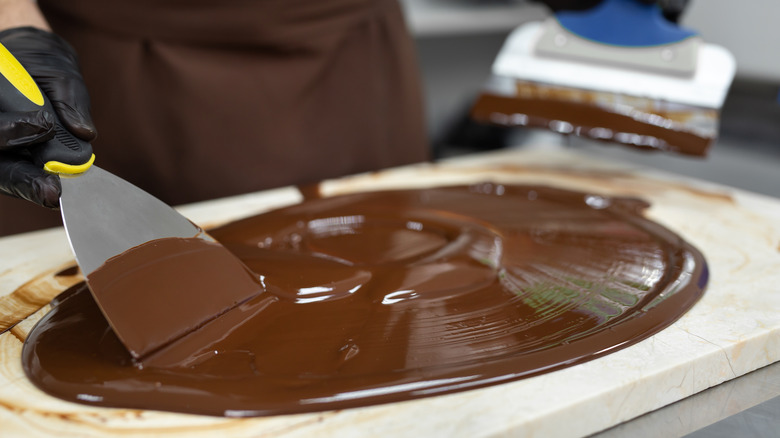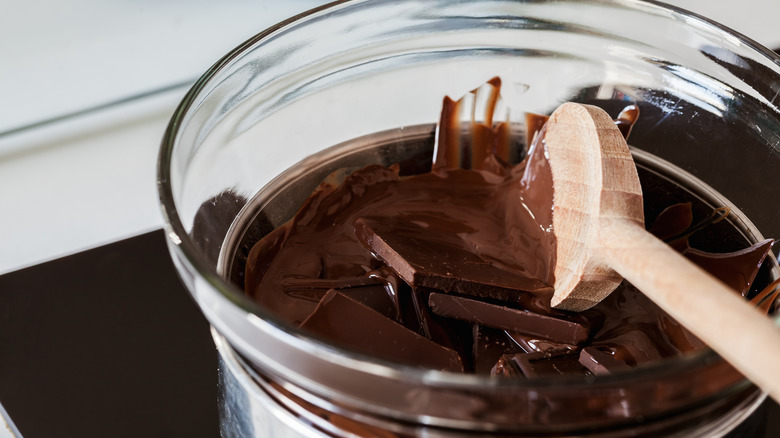How Long You Should Let Chocolate Settle After Tempering
The many facets of chocolate make it a timeless force that strengthens any kitchen repertoire. As a solid bar, its bitter quality works wonders for your dessert's flavor. In powder form, it can serve as the base for an intensely rich chocolate cake. But, when tempered, chocolate is at its highest quality. Tempered chocolate is smooth, shiny, creamy, and has that distinct snap when you break it in half that is to die for.
To temper chocolate is to melt it at controlled temperatures in an attempt to refine it. A quick run-through of the process would be: melt the chocolate, cool it, then reheat it. The first melting phase separates the chocolate molecules, the cooling phase lets the chocolate settle until it forms stable crystals or reaches a lower temperature (wait until it drops to around 82 degrees Fahrenheit), and the reheating phase removes unstable crystals while solidifying the final structure of the chocolate molecules. This work of art is essential to perfecting confectionaries. If you spot chocolate-coated desserts with a solid consistency, smooth texture, and glossy finish, it's likely the result of tempered chocolate.
By contrast, untempered chocolate can be brittle, dull, and soft when you break it, with no hard snap. This results from poor crystallization, whether due to improper temperatures, lack of stirring, the chocolate seizing, or even using the wrong type of chocolate. Indeed, it may help to know the ideal chocolate type for tempering before embarking on this kitchen quest.
Regulating heat when tempering chocolate
The process of tempering heavily depends on temperature changes; it's all in the name. From room to melting temperature, every degree contributes to the success of your final product. As it's tempered, the chocolate forms stable crystals that allow it to hold its shape and stay solid at room temperature. These crystals are a result of melting and cooling points reached throughout the tempering process. And, because the temperatures to which you melt and cool the chocolate are particular, you'll need a thermometer to guide you through the process.
To temper, begin by using a double boiler to melt dark chocolate to at least 105 degrees Fahrenheit. Next, you want to let the chocolate settle or cool by removing it from the boiler and adding more dark chocolate to the bowl. As you stir, check that the chocolate's temperature reaches about 82 degrees Fahrenheit. This is the ideal temperature to form crystals that help the chocolate to thicken enough to temper well.
Finally, return the bowl to the boiler and allow the temperature to rise. Once it reaches about 89 degrees Fahrenheit, you're left with just enough crystals to form a perfect, shiny canvas of melted chocolate to work with. You've now mastered tempering chocolate and can use it for the perfect easter eggs, candy molds, silky fondue, or as a simple drizzle atop your cookies.

